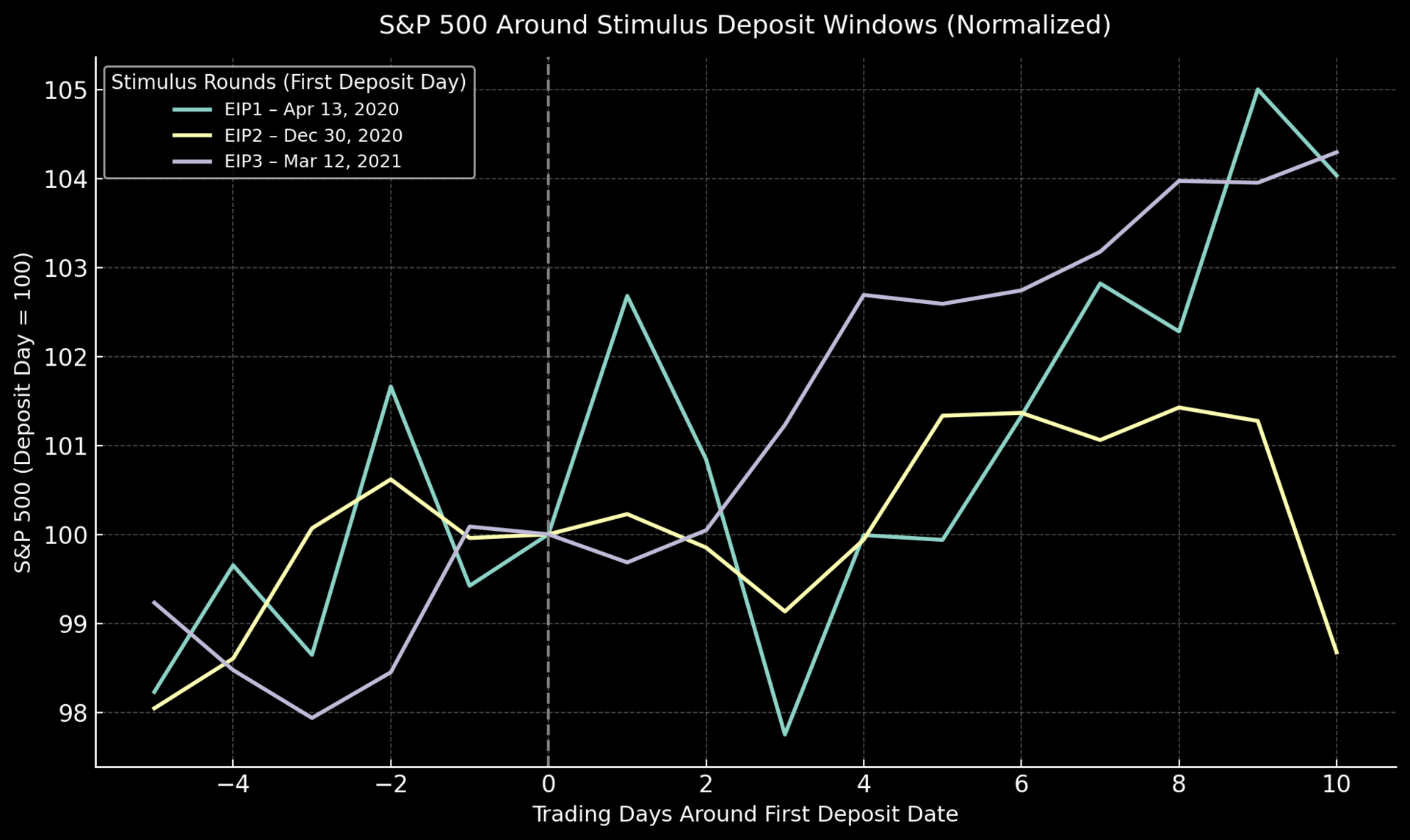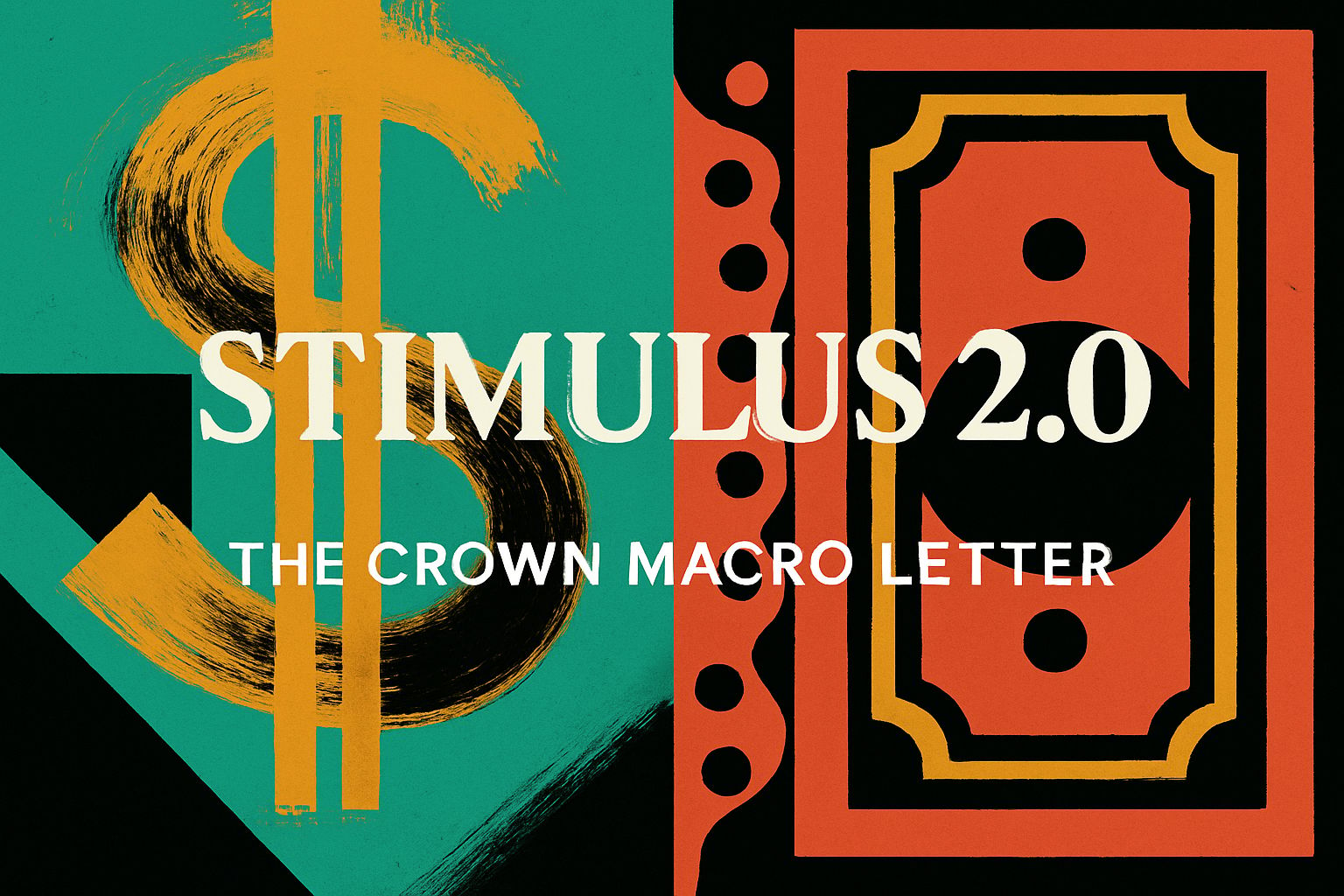The Stimulus That May or May Not Exist
Right now, there’s a headline floating through Washington: $2,000 per person in new stimulus, funded by tariffs.
It’s not law. And, frankly, it may never become law.
But if it does (even partially) it could produce one of the cleanest, fastest-moving setups of the entire year.
This week’s Letter is a special study that focuses on this setup in detail, so that if this idea becomes real, you already know the exact chain reaction from headline to deposits to market behavior.
If nothing happens, you’ve only lost a few minutes of reading time.
If it does, you’re way ahead of everyone else.
Why this is worth your time:
A free option: If a ~$2,000 cash transfer lands, the first week of deposits tends to create a short, sharp “retail-flow” bid in specific corners of the market. In 2020–21, certain stocks (I’ll detail this later) saw ~5–7% abnormal gains right around deposit dates, on top of whatever the broad market was doing. That effect faded fast, and it was weaker by the third round.
Cross‑asset tells are reliable: When fiscal chatter lifts breakeven inflation more than nominal yields, real yields fall and that tends to support gold too.
What’s on the table now (and what isn’t)
The White House says the President is “committed” to $2,000 “tariff dividend” payments; staff are exploring how to do it and have admitted it “may come in lots of forms” (not necessarily cash). Reuters
Revenue reality: FY‑2025 customs duties came in around $195B; even a means‑tested $2,000 transfer to ~150M Americans would cost roughly $300B—more than this year’s tariff take. (Budget watchdogs/CBO and Treasury data confirm the broad order of magnitude.) AAF
Don’t over‑assume the revenue: Fact checks note the oft‑repeated “$2B/day” tariff claim is not reflected in Treasury customs collections. Treat aggressive revenue talk as politics, not cash in the bank. AP News
Part I: What happened the last time America got direct deposits?
To understand the “option” we’re getting today, you have to look at the only modern precedent: 2020–21’s three rounds of stimulus checks.
And here’s the bottom line:
1. Markets reacted before checks arrived
As Congress approached agreement in March 2020, we saw one of the biggest single-day rallies in history.
It was the certainty of the deal that triggered the move.
Markets don’t wait for payouts, rather they move on probabilities.
2. But the real action started on deposit day
This is the part most people missed:

When the first checks hit bank accounts (April 11–15, 2020), a tight group of retail-heavy stocks jumped 5–7% in a matter of days.
That pattern repeated for the second round (Dec 29–30, 2020).
But by the third round (March 2021), the effect was smaller as the novelty had worn off.
3. The spending window was short
Lower-liquidity households spent a big chunk inside two weeks.
Higher-income households barely touched theirs.
Meaning the economic boost was fast, not persistent.
4. Gold followed real yields, not inflation
As checks boosted growth expectations and the Fed eased, real yields fell, and gold moved quickly in response.
5. Credit spreads tightened
Liquidity waves compress risk premiums. High-yield spreads tightened dramatically from their 2020 blowout.
6. The USD softened
Risk appetite returned, and the broad dollar index drifted lower.
All of this happened within days to weeks, not years.
Scale check: The pandemic program delivered ~476M payments / ~$814B in total; any 2025 program is smaller unless repeatedly renewed.
Part II: Is this time similar or different?
This isn’t 2020.
Here’s why the response, if checks materialize, will be smaller, but still tradable:
The Fed has already cut rates back to 3.75–4.00%
Excess savings are gone for most households
Inflation is still sticky, and the Fed is sensitive to any new demand wave
Tariffs raise prices, reducing the net benefit of any check
And the economy is late-cycle, not early-recovery
Translation: A check today won’t create a new bull market. But it can create a repeatable short-term pattern.
Part III: The moment that matters (“Go”/”No Go”)
If this policy becomes real, two moments will matter more than anything else:
1. The announcement that includes real details (who qualifies and how it’s delivered)
This is when probability solidifies.
In 2020, markets jumped before the first dollar went out.
2. The first deposit window
Once Treasury/IRS publishes dates, the clock starts.
Historically, most people receive funds within a week via direct deposit.
And that’s when the short-term behavioral pattern kicks in again:
Retail favorite stocks get sudden inflows
Option volumes spike
Gold responds to real yields
Credit spreads can briefly tighten
The USD softens at the margins
Think of this as a 5–10 day window where behavior overwhelms fundamentals.
Two trades that only make sense if cash + a confirmed deposit calendar are announced
Below are the only setups worth considering.
They are conditional, time-boxed, and defined-risk.
If the White House pivots to a tax credit instead of cash, or if Treasury does not publish a first-deposit date, stand down entirely.
1) Deposit-Week Expression (tactical, defined-risk)
Objective: Capture the 5–7% abnormal return window historically observed in retail-heavy stocks during the first deposit week of stimulus rounds.
A. What to trade (for Pro readers only)
Upgrade to Pro to read the rest.
Become a paying subscriber to get access to this post and our weekly subscriber-only content sent every Monday morning.
Upgrade NowUpgrading to Pro gets you:
- Real portfolio structure models and my positioning
- Detailed inflation, rate, and credit regime breakdowns
- Tactical macro briefings showing how capital is actually moving


